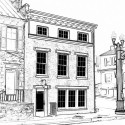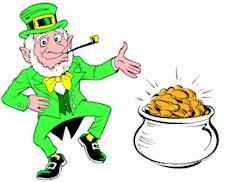 The reception and silent auction to celebrate the completion of the Samuel Noakes House on March 9 is drawing closer. While we count down until March 9, a number of items that will be available at the auction will be highlighted in the PHW blog.
The reception and silent auction to celebrate the completion of the Samuel Noakes House on March 9 is drawing closer. While we count down until March 9, a number of items that will be available at the auction will be highlighted in the PHW blog.
The Peoples Barber Shop sign will be available for bidding during the evening showing. The sign, which graced the Noakes house for more than 60 years, is another testament to the enduring quality and quantity of advertising from Coca-Cola.
In addition to the standard shop sign proclaiming the location of the Peoples Barber Shop, the sign features two red Coca-Cola button signs. The button signs are weathered from their many years outdoors, but are still largely intact and identifiable.
The button signs were produced by Temco, a company based in Nashville, TN. The signs, advertised as “Porcelain is Permanent,” are made from metal coated with a porcelain enamel. Signs generally ranged in size from 12-36″ and came in a variety of colors and logos.
To see learn more about the Temco Coca-Cola signs, visit www.vintagevending.com and www.collectorsweekly.com.
If you would like to own this piece of history, tickets are still available for both the afternoon and evening reception and silent auction on March 9. Remember, the People Barber Shop sign will be available only during the evening showing! Reserve your spot online via PayPal, or make your reservation by mailing in a check payable to PHW to 530 Amherst St., Winchester, VA 22601.
 Afternoon Showing, 3-5 p.m. – $20 admission
Afternoon Showing, 3-5 p.m. – $20 admission
Evening Showing, 6-8 p.m. – $30 admission







